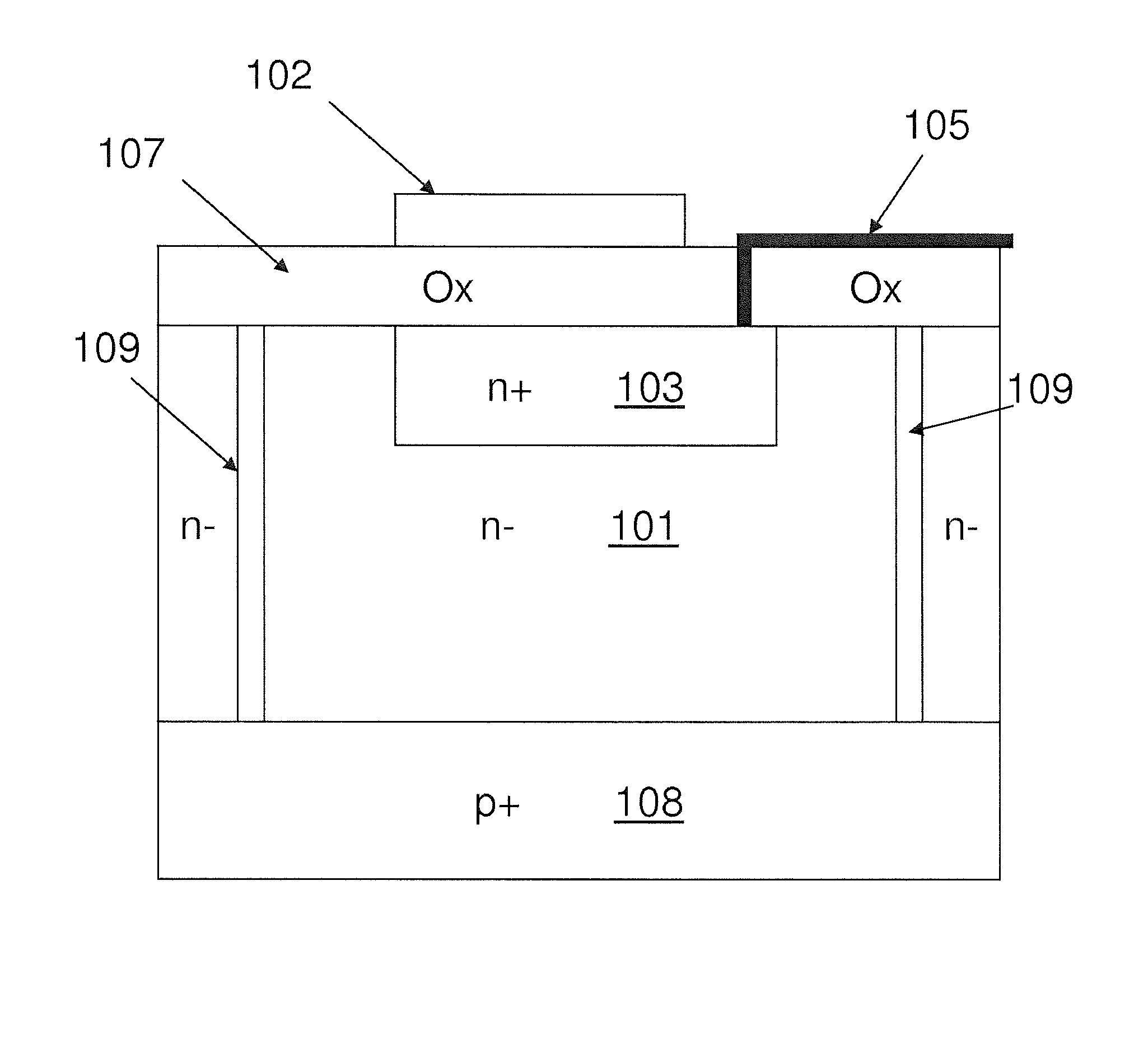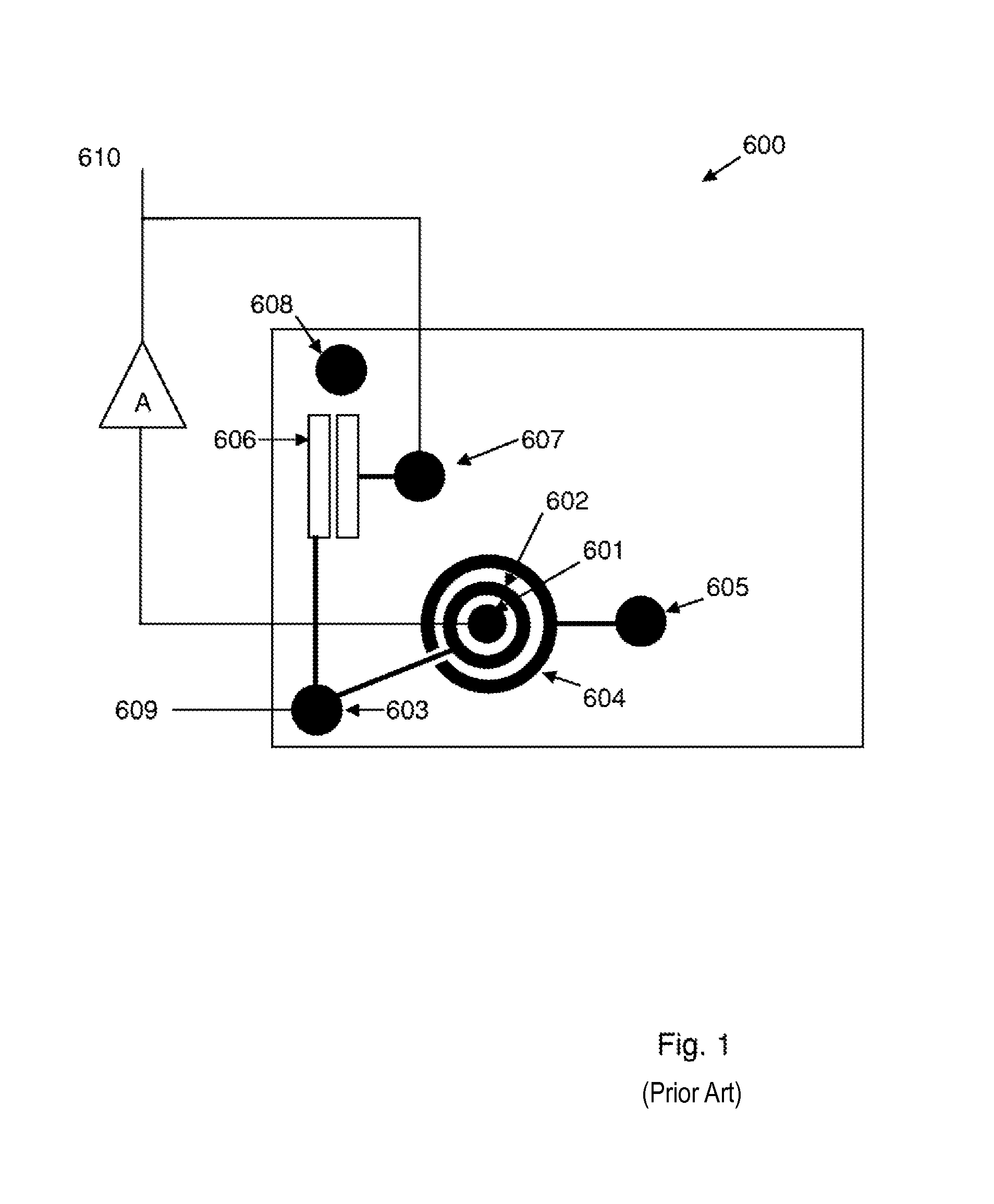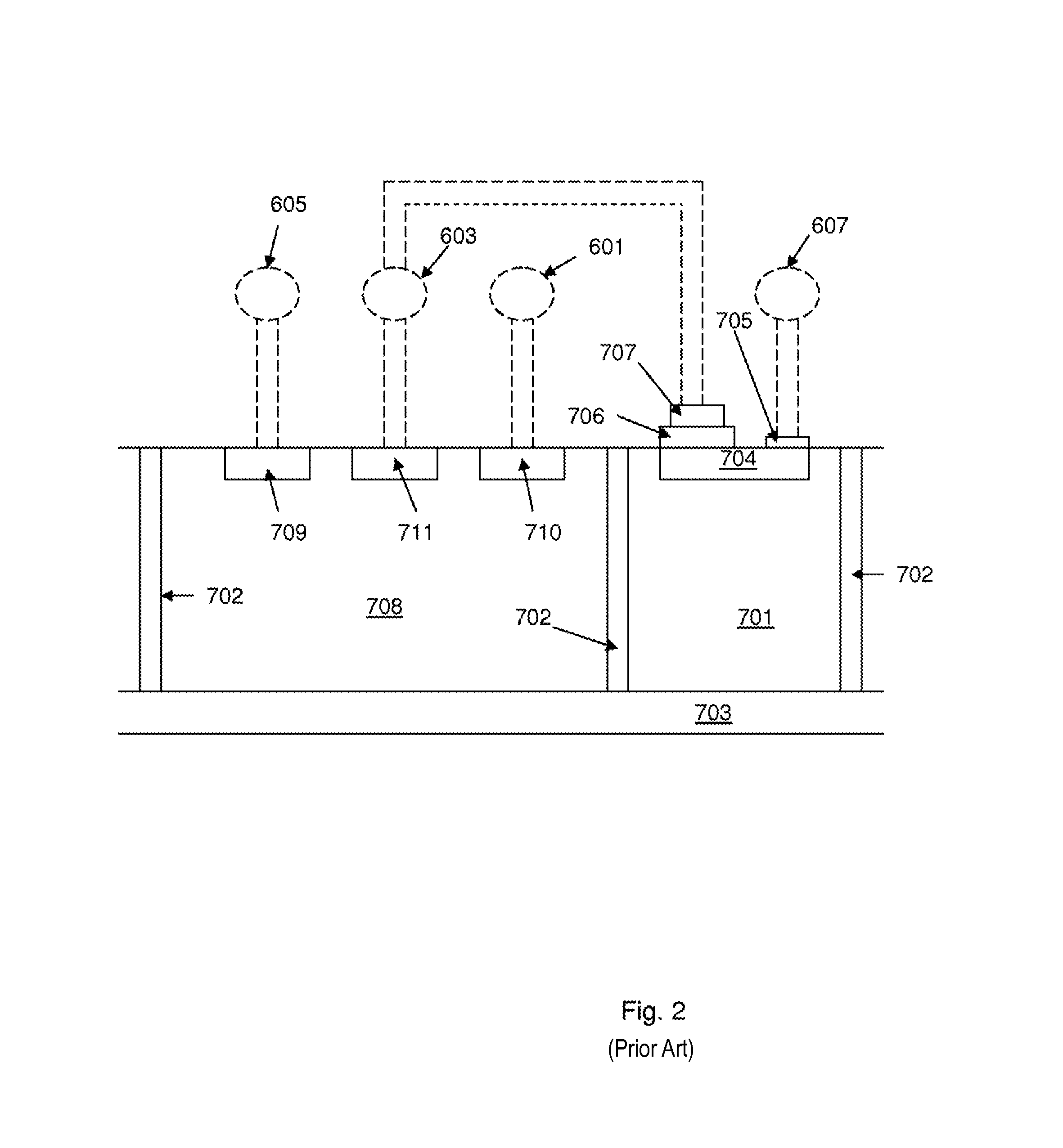Charge-sensitive amplifier
a technology of amplifiers and charge-sensitive pads, which is applied in the direction of amplifiers, charge amplifiers, analog and hybrid computing, etc., can solve the problems of reducing the fet gain, difficult to work with bond pads with diameters smaller than 70 micrometres, and difficult to position wire bonds within the boundary of pads. achieve the effect of optimizing manufacturing productivity
- Summary
- Abstract
- Description
- Claims
- Application Information
AI Technical Summary
Benefits of technology
Problems solved by technology
Method used
Image
Examples
Embodiment Construction
[0030]The invention exploits a feature which is commonly used in radiation detection systems to achieve a “charge sensitive amplifier” (CSA). The output voltage step from a CSA is proportional to the increment of charge deposited at the input and is independent of the capacitance of the detector connected to the input. Since the increment of charge released by the detector is proportional to the energy of the incident radiation particle, the output voltage step from a CSA is also proportional to the energy of the particle. An example of such a CSA is described in GB 2305776. With reference to FIG. 5 of GB 2305776, the key components of a CSA are the high gain amplifier A and a feedback capacitor 512 that connects the low impedance output of the amplifier to the high impedance sensitive gate, G, of the FET that is also connected to the detector by connection 502.
[0031]The FET device is typically a small die with dimension approximately 1 mm by 1 mm and connections to the electrodes o...
PUM
 Login to View More
Login to View More Abstract
Description
Claims
Application Information
 Login to View More
Login to View More - R&D
- Intellectual Property
- Life Sciences
- Materials
- Tech Scout
- Unparalleled Data Quality
- Higher Quality Content
- 60% Fewer Hallucinations
Browse by: Latest US Patents, China's latest patents, Technical Efficacy Thesaurus, Application Domain, Technology Topic, Popular Technical Reports.
© 2025 PatSnap. All rights reserved.Legal|Privacy policy|Modern Slavery Act Transparency Statement|Sitemap|About US| Contact US: help@patsnap.com



